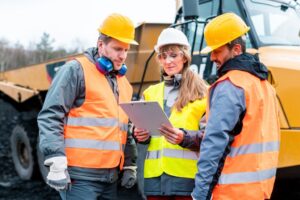SHARE THIS
Raise your hand if you’ve seen the life-defying, iconic photos of a construction worker sitting on a beam hundreds of feet in the air.
While a thrilling and often aesthetic image, many parents would say “absolutely not” in regard to their children doing something similar.
Having done everything you can to keep your child safe up to this point, the last thing you want to do is send them off to a career you may consider as being dangerous.
Thankfully, those beam sitting days are done for construction workers, especially if they aren’t attached to a fall protection safety harness.
Safety matters to the construction industry and even impacts bidding and contracts. As the importance of safety was recognized, owners began holding contractors to high standards of safety performance when awarding contracts.
Since OSHA, the Occupational Safety and Health Administration, was established in 1971, they’ve had a big influence on workplace safety. In fact, by 2016, worker injuries were down to under three per 100 workers from almost 11 incidents per 100 workers in 1970.

Just as important as being taught the skills of the trade is learning safety best practices. The Construction Industry Institute (CII) outlines 5 key techniques that contribute to zero injury safety performance:
Achieving zero accidents on projects is an attainable goal. By making it part of training and recognizing the importance of keeping employees safe, the construction industry has continued to make great strides towards becoming safer.
Interestingly, the major premise of zero incidents is simple: If you can work safe on a task one time, you can do it twice; if you can do it twice, you can do it four times; if you can do it four times, you can do it eight; and so on.
Taking responsibility for their own safety and their coworkers is crucial in workplace safety. A survey completed by more than 250 contractors in 2016 found jobsite worker involvement as the most widely recognized aspect of a safety program — an increase of 19 percent from a similar 2012 survey.
Technology advancements are also a contributing factor in increasing safety in the workplace. Exoskeletons provide support and help decrease the strain of repetitive motions. Virtual reality provides training in areas such as welding and heavy equipment operating, letting trainees learn the basics at a distance while still getting experience. Drones help monitor worksites, especially in elevated surfaces that could be high risk.
There’s always room for improvement, but with an eye to the future, the industry is making strides towards creating a safer workplace. Perhaps Richard Campbell, an instructor with more than forty years of construction experience, put it best when he shared this thought: “One of the biggest changes I’ve seen over the years has been in safety. Companies care more about the health and well-being of the employees.”
Ready to learn about the steps aspiring craft professionals should take to get started?
